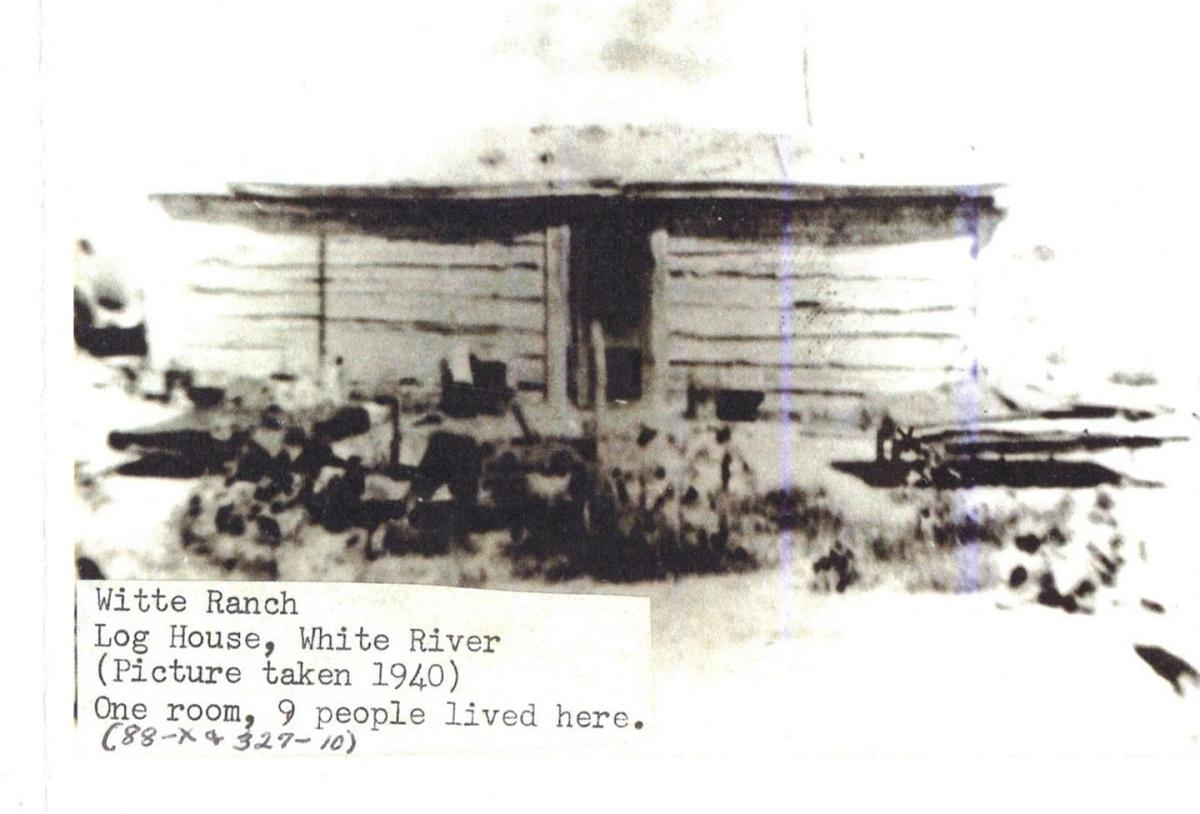Home Sweet Home
But there were Issues
Herman and Gus had left home to make a new life. Making the decision was easy. But they had a bunch of kids. Where do you put a tribe of kids when you don’t have a mansion? They had made the deal with the Indian Tribe to rent some land. It was flat, at least in places, and looked like it could grow wheat. And, it came with a house. Ok, maybe not much of a house. A log house.
They moved their five kids (and on one the way) into (or around) the log house. It rested safely high on solid ground along the bank where Grass Creek flows into White River. Prairie surrounded the house, for many miles, for as far as you could see on a clear day. You couldn’t see any neighbor house. There were no lights at night. Except the stars, and the Milky Way, and the big pushy moon which drowned out the stars nearby. Distance from neighbors was a problem for some, but not for everyone. The oldest of Dad’s younger sisters, LaVerne, reported that she hated the place. She felt so lonely. If her mother was gone for the day, there was no one to talk to. There was no one around. However, her younger sister Phyllis said that she did not mind. She was happy all the time. If she got lonely, she could talk to LaVerne. Otherwise, she could play outside whenever she wanted. I do not know what Dorothy thought. (She was the youngest of the daughters so maybe was only a toddler.)

Uncle Joe said the log house wasn’t too big. If you suppose the door was about 36 or 38 inches wide you could estimate its length if you had a picture of the house. (Maybe the picture above will work. See the sons and hired men on the beds outside the front door.) It was twice as long as it was wide. There were a lot of cottonwood trees along the river. But Dad said he believed that the cabin was made of pine trees logged from the Black Hills and hauled by truck to the Reservation. The logs were trimmed to about a foot thick and about 16 to 28 inches high. None were the same size so carpenters had to be artistic to build a house out of logs. The cracks between the logs were mudded in with good Badland shale. That dirt is almost water-proof.
Conditioning the inside air was a problem. In the winter a cast-iron stove could burn wood and keep the house warmer. (I do not think anyone said it was “warm.”) In the summer, the house felt cooler inside than the sunbaked air outside. It was bearable.
When I was about four years old, maybe 20 years after the family moved to other quarters, I saw a remnant of one log wall still standing and I could feel the smooth floor. I remember the sun was hot that day and the single wall offered no shade. I was not impressed with the air conditioning.
Down by the river bank, cool, clean, spring-fed water far below ground seeped into a shallow well lined with a galvanized iron tube standing on end as big across as a man can reach. You could dip a bucket into the water and pull it up with a rope. Three or four 10-gallon cream cans could supply the family for a week, and have water left over for a bath on Saturday night. The bath tub was a round metal tub that held maybe 10 gallons. Not big enough for anyone but a child to sit in. My mom bathed me in such a tub It fit me ok. I was comfortable.
The outhouse was a tiny shack about four feet square and about six feet high. A wood bench with a hole to fit a man’s rear end straddled a six foot deep hole in the ground. A second, smaller hole might better fit the bottom of a woman or the kids. It was important that the outhouse be at least twenty steps away and downwind from the house. Keeps the flies down that way. But wear your shoes on the evening walk. Cactus along the path will jump out and grab an unprotected toe. I know. I tested. I was not happy with the test results.
The stories I have heard make me think that residential construction in agricultural areas back East was fancier, but maybe not so much better. The log cabin did not have a ceiling. Back East they had ceilings. I heard Dad’s sister complain about the ceiling back East. The cloth sheet that was to act like a ceiling tore a little when it could not stand the weight and let a fat rat fall onto her bed!
I heard stories that a well-built roof should have grass growing on a layer of dirt laid on planks. A heavy rain would, of course, saturate the dirt and drip through the planks. So the kids had to readjust the buckets to catch the big drips. Just like back East.
The Badlands house had at least one unique issue. Grandad told me a story while he and I were feeding the cattle in the pickup one winter afternoon. Grandad said that he had installed a swinging screen door on the log cabin doorway, as Grandma wanted. It let an evening breeze cool the inside, and it helped reduce the population of flies during the day. Of course, the door opened and shut a hundred times a day as kids scurried in and out all day long. It had a long spring that closed the door, but the hinges sometimes got loose and let the door drag in the dirt of the floor.
Grandad insisted that the kids take care to pull the door shut every night before bed. Of course, that rule was not always obeyed. Grandad said that he was lying in bed one night, not yet asleep. Kids were bedded down all across the floor. He said he heard a little rustle by the screen door and saw in the moonlight a deadly rattlesnake slipping into the warmer house!
Grandad didn’t yell. He did not get out of bed. Her stayed very quiet. He did not want to cause a stampede of kids trying to get past the snake. Instead, he reached above his head for the double-barreled shotgun hanging on the wall above his bed. He leveled the gun and blasted the snake with both barrels!
He said the screen door stayed shut after that.



